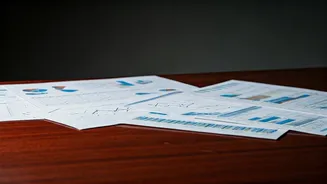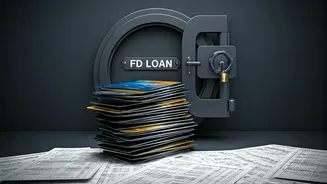Identifying Financial Obstacles
The initial and often most challenging task in personal finance is acknowledging the existence of problems. Many individuals struggle with recognizing
their financial weaknesses. This can stem from denial, lack of awareness, or a combination of factors. Some common indicators of financial difficulties include high levels of debt, inconsistent savings, and a lack of budgeting. However, it's crucial to move past denial and conduct a thorough self-assessment. Begin by examining your income and expenses. Track where your money is going and determine whether your spending habits are aligned with your financial goals. Identify areas where you are overspending or where money is being wasted. Analyzing your debts is also crucial. Determine the types of debt you carry, interest rates, and repayment terms. This detailed analysis forms the foundation for developing a comprehensive financial plan. Only by honestly recognizing and identifying their financial weaknesses can individuals begin the process of addressing them.
Budgeting and Expense Control
Once you've identified your financial challenges, the next hurdle is establishing a budget and controlling your expenses. Creating a realistic budget is a crucial step towards financial stability. This involves outlining your income and allocating funds for essential expenses, such as housing, food, and transportation. A well-designed budget also allocates funds for savings and debt repayment. Sticking to a budget can be tough. Many people struggle with the temptation to overspend or make impulsive purchases. Techniques such as using budgeting apps, tracking expenses regularly, and setting financial limits for different categories can help with adherence. Expense control goes beyond budgeting. It involves making conscious decisions about where you spend your money. This may involve finding ways to reduce your expenses, such as negotiating lower prices on bills or seeking more affordable alternatives. The key is to make informed financial choices aligned with your goals. Effective budgeting and expense control enable individuals to manage their finances proactively, rather than reactively, leading to better financial health.
Debt Management Strategies
Managing debt is a significant financial challenge for many individuals. Debt can be a heavy burden. High-interest debts can lead to financial stress and impede progress towards other financial goals. Several strategies can help individuals effectively manage and reduce debt. One popular approach is the debt snowball method, where you focus on paying off the smallest debts first to build momentum. The debt avalanche method, on the other hand, prioritizes debts with the highest interest rates. Another effective tactic is debt consolidation, where you combine multiple debts into a single loan with a lower interest rate, simplifying repayment. It’s also crucial to avoid accumulating additional debt while paying down existing obligations. This requires careful budgeting and disciplined spending habits. Seeking professional advice from a financial advisor can offer tailored guidance and strategies to manage your specific debt situation. Taking proactive steps to manage debt can free up cash flow and allow you to make progress towards financial goals.
Building an Emergency Fund
Building an emergency fund is a critical yet often overlooked aspect of personal finance. An emergency fund is a savings account designated to cover unexpected expenses, such as medical bills, job loss, or home repairs. Having this financial cushion can prevent you from accumulating debt during a crisis. The recommended amount to save in an emergency fund is typically 3-6 months' worth of living expenses. This might sound intimidating, but even small, regular contributions can make a significant difference over time. Automating your savings is an efficient strategy; set up automatic transfers from your checking account to your savings account. Start with a manageable amount, and gradually increase your contributions as your income grows. Review your fund periodically to ensure it still meets your needs. Having a well-funded emergency fund provides peace of mind and financial security. It also allows you to handle unexpected events without jeopardizing your long-term financial goals.
Investing for the Future
Investing for the future is another challenging but essential task in personal finance. Understanding the basics of investing, choosing appropriate investment vehicles, and creating a diversified portfolio can be overwhelming. Before investing, it's vital to assess your risk tolerance, time horizon, and financial goals. Different investment options are available, including stocks, bonds, mutual funds, and real estate. Diversification, meaning spreading your investments across various assets, is critical to managing risk. It is also important to consider long-term growth. When you’re younger, you may be comfortable with higher-risk investments that offer the potential for higher returns. As retirement nears, many people shift towards more conservative investments. Regularly reviewing and rebalancing your portfolio to maintain your desired asset allocation is necessary. Consider seeking guidance from a financial advisor who can help you develop an investment strategy. Investing prudently and consistently is one of the most effective ways to build wealth and secure your financial future.











